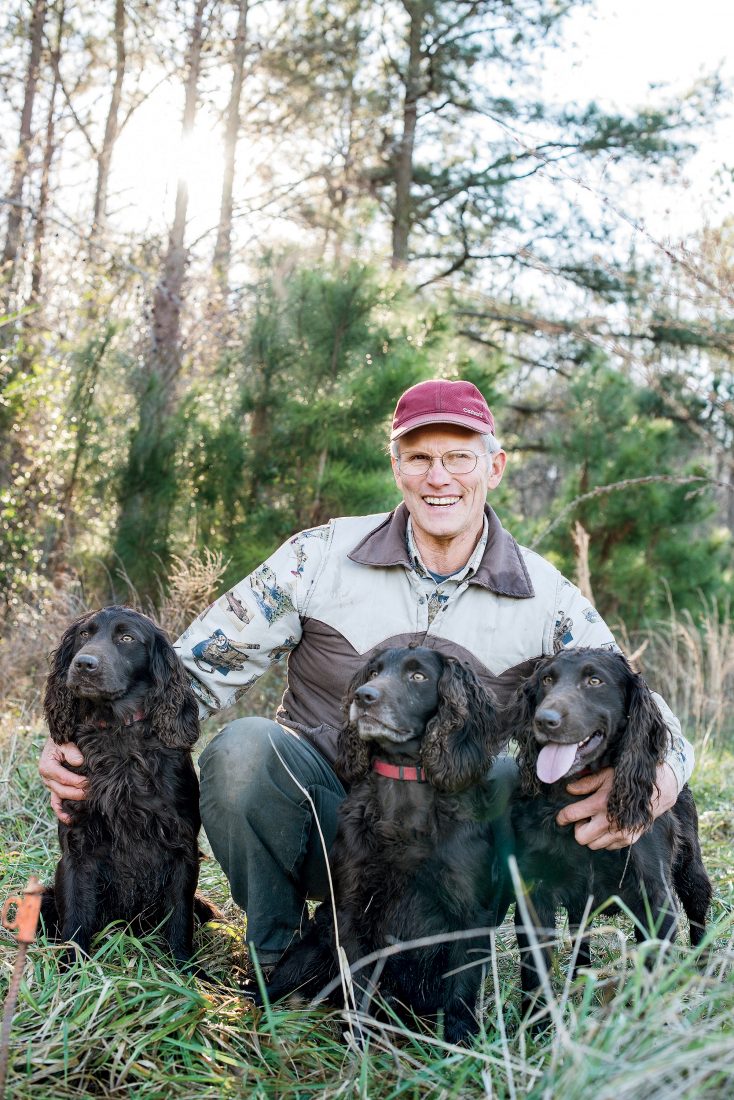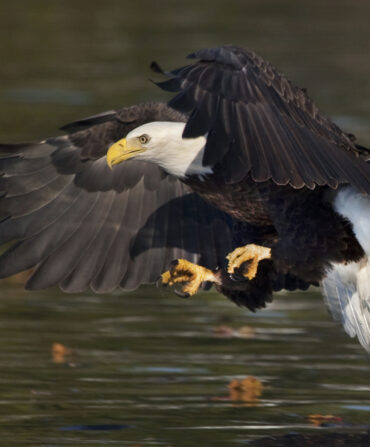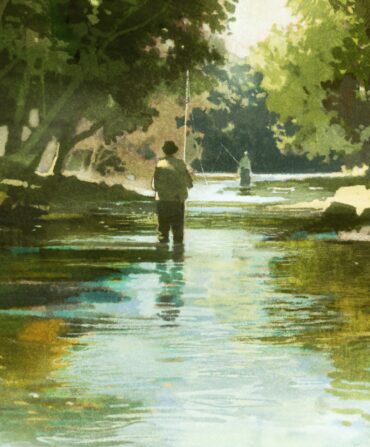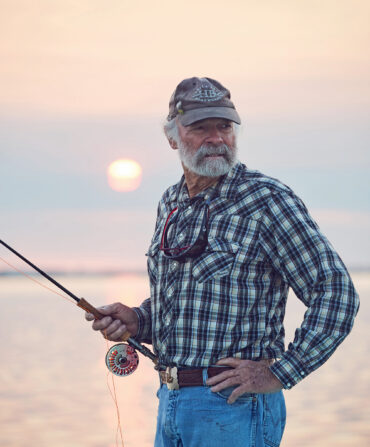Bounding through a field of thick sandhill wire grass outside Cheraw, South Carolina, John Rucker still remembers the moment as if it were yesterday. He was ten years old, hunting coveys of bobwhite quail with his father and a dog handler named Frank Simpson in a similar field near the Black River in North Carolina. Simpson’s Boykin spaniels crisscrossed the scrub in search of birds when, suddenly, one dog took a peculiar interest in a particular clump of grass. “Frank walked over, bent down, and found that the dog had led him to a box turtle,” Rucker recalls. “Then he told us, ‘Some dogs are wired up a little differently. They like to point box turtles.’”
Rucker had almost put the moment out of his mind until one day fourteen years ago, when a beloved Boykin named Buster presented him with a turtle during a hunt in Tennessee. Rucker praised the dog and returned the reptile to the woods. But the spaniel soon returned with another, and another. “It came full circle,” he says. “Another dog wired up a little differently rewrote the history of turtle research in America.”
Today, Rucker is America’s Turtle Whisperer. When he tells one of his spaniels, Watcher, to “hunt turtle,” the dog commences a rapid back-and-forth sweep of the wire grass and doesn’t stop until he has a shut-up-tight turtle in his mouth. Rucker and his dogs have become highly sought after by researchers trying to save North America’s declining populations of box turtles. This rugged and fit sixty-five-year-old retired English teacher and self-taught naturalist, who lives in Shady Valley, Tennessee, now raises his own turtle dogs. Out of each litter, he’s discovered, two or three might have the knack.

Photo: Lissa Gotwals
A Boykin sniffs the fiberglass turtle shells used to train the dogs.
Before Rucker stumbled into this second career, researchers found it nearly impossible to obtain a solid read on turtle population numbers—particularly in forests. Boykins, he found, are ideal turtle hunters. They’re eager to please and soft mouthed, and their noses can pick up minute traces of scent the turtles leave behind as they move. They’re capable of sniffing out just about every single turtle on an acre of land, down to quarter- and golf-ball-size hatchlings. “It’s amazing,” Rucker says. “When they know I really want a turtle, they get fanatical about it.”
Often, Rucker and his pack’s labors have uncovered good news. In some parts of the Appalachians, the last great stronghold of the eastern box turtle, his dogs have shown that populations hover around pre-Columbian numbers, with a healthy mix of hatchlings and seventy-five-year-old adults. In Indiana, he collected scores of turtles in a swath along a new corridor of Interstate 69. After being kept in a holding area during the highway’s construction, the turtles were returned to their original acreage, which now includes miles of turtle-extruder fencing. The South Dakota National Heritage Foundation had listed only 13 sightings of ornate box turtles, a culturally important species, over sixty-five years. In just one week, Rucker’s dogs not only found 130 of them on the Pine Ridge Indian Reservation, but also helped reveal that they need a specific, shade-providing species of wire grass to survive.
There have also been less fortunate outcomes. A large study in Massachusetts found numerous old turtles but no hatchlings. “The people I worked with were heartbroken,” Rucker says. “The turtles were a living dead population. There were no offspring.”
Sadly, that’s also the state of affairs across vast swaths of Rucker’s native Southeast, where box turtle populations

Photo: Lissa Gotwals
Dogs work a field for scent.
are being devastated by monoculture crops and timberland, as well as habitat fragmentation brought on by overdevelopment and new roads. Another hazard—people collecting box turtles and unrestrictedly selling them as pets—is a threat that Rucker hopes to see eradicated in South Carolina, where it remains legal. In many ways, he says, their plight mirrors that of the bobwhite quail, as do their open-space habitat requirements for a healthy population: at least one hundred acres of ecologically diverse forest or grassland, and an even mix of seventy- five or so turtles, both males and females. “What the dogs have taught us is that if you get an area much smaller than that, you get zero recruitment,” he says. “There’s so much predation or inbreeding that they eventually don’t even hatch.”
When I ask Rucker why he’s so driven, his eyes light up and his voice jumps an octave. “Turtles predate the dinosaurs,” he says. “We can study them and understand how they have survived unimaginable stresses. And that has applications to humans. It’s the tortoise or the hare. Which one ultimately wins the race? Well, maybe it’s the slow, methodical one, not the one that moves swiftly and with no thought of consequences. The turtle teaches these lessons better than any animal that I know of.”








